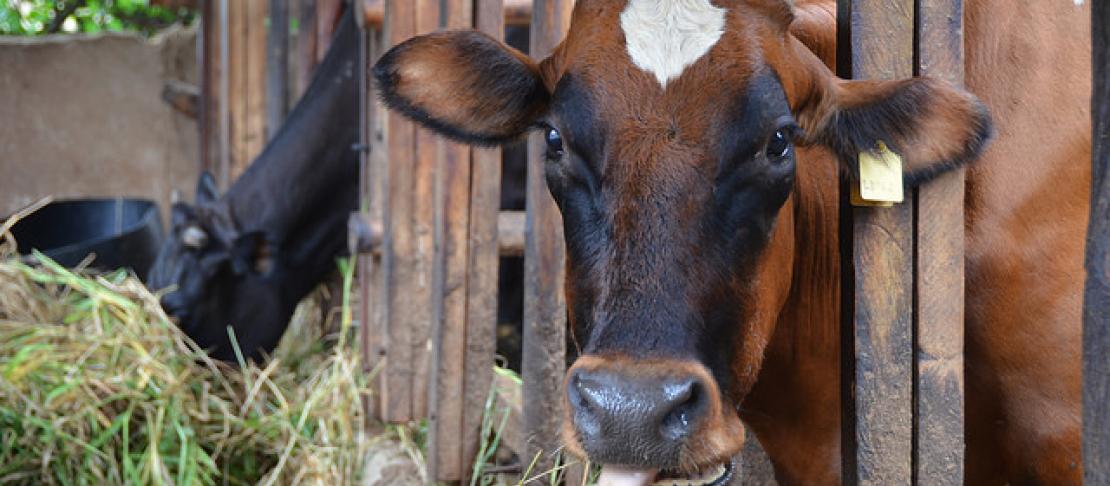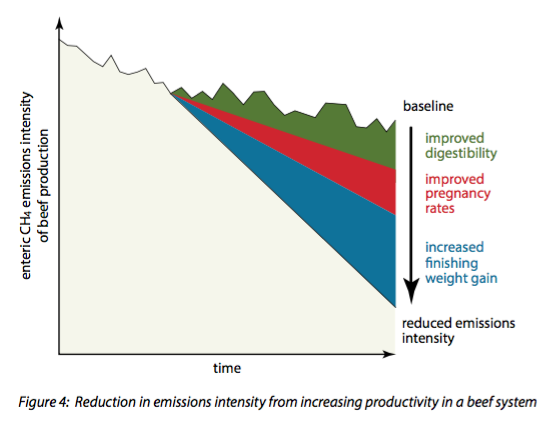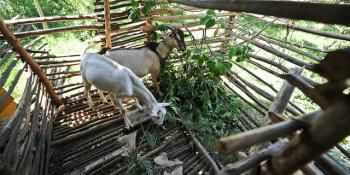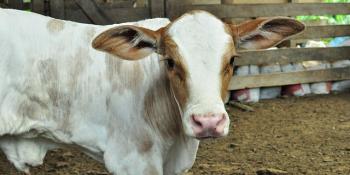Improved greenhouse gas inventories for livestock essential to meet Paris Climate Agreement

Improved greenhouse gas inventories and approaches for livestock are necessary to meet international climate targets, say researchers.
To reduce greenhouse gas emissions from the livestock sector and demonstrate that they are delivering on the ambitious goals of the Paris Agreement on climate change, countries will benefit from using advanced greenhouse gas inventory and accounting methods to monitor, verify and report on emissions. But these approaches are not currently in wide use, according to a new study by scientists from the Livestock Research Group of the Global Research Alliance on Agricultural Greenhouse Gases (GRA) and the CGIAR Research Program on Climate Change, Agriculture and Food Security (CCAFS).
Read more:
Livestock development and climate change: The benefits of greenhouse gas inventories
The authors argue that more accurate and robust information on greenhouse gas emissions and productivity from livestock will be essential if the sector is to contribute effectively to climate and development outcomes. They recommend this information be collected through an advanced inventory system.
"Sixty-one countries included mitigation in the livestock sector in plans submitted to the United Nations Climate Change conference in 2015,” said Lini Wollenberg, leader of the CCAFS Low Emissions Development research program based at the University of Vermont’s Gund Institute for Ecological Economics. “These countries need advanced greenhouse gas inventories to report on changes in emissions and the reductions in emissions intensity that result from more productive and efficient livestock systems,” she explained.
Simple inventory methods (called Tier 1) use livestock numbers multiplied by a constant emission factor per animal, meaning that the only way to reduce emissions from livestock is to reduce animal numbers. However, this approach is not plausible for countries concerned with food security and rural development, as livestock provides essential food and income to many of the world's poorest people. Instead, the authors argue, we must recognise that livestock development and climate change outcomes can support each other. "More productive and efficient farm systems generally produce food at much lower greenhouse gas emissions per unit of product," explained Wollenberg.
As an alternative to simple inventory methods, advanced inventories (called Tier 2) allow countries to understand the impact of different productivity measures on emissions. For example, reductions in emissions intensity may be achieved through improved digestibility of feeds, increased pregnancy rates for mature breeding cows and increased weight gains in finishing animals, according to the study. Figure 4 from the study, pictured below, shows how productivity gains can reduce emissions intensity.

These and other productivity measures may support rural economic development and form the basis of a climate change mitigation plan to be submitted to the United Nations Frameworkd Convention on Climate Change (UNFCCC), and may even help a country qualify for climate finance.
Accounting methods make a difference
The study draws on a global analysis demonstrating that doubling the milk production of low-yielding dairy systems, from 1,500 to 3,000 litres per cow per year, could roughly halve the greenhouse gas emissions per litre of milk from those systems. However, if a country’s livestock greenhouse gas inventory does not use Tier 2 methods, then the impact of such productivity gains is missed.
Uruguay, for example, used its advanced greenhouse gas inventory in the livestock sector to commit to reducing emissions intensity in livestock (i.e. emissions per kg of meat) by 31-46% by 2030 from base year 1990. The inventory also allows Uruguay to incorporate outcomes from productivity improvements into its domestic policies and use them to demonstrate progress towards its INDC.
“Many countries know that a Tier 2 inventory would be incredibly helpful for them, but they are deterred by the perceived complexity and the resources required," explained Harry Clark, Co-chair of the GRA’s Livestock Research Group and Director of the New Zealand Agricultural Greenhouse Gas Research Centre. "An inventory based on Tier 2 methods is by its nature more detailed than the simple Tier 1 methods, but it does not have to be much more complicated,” he said.
Putting advanced methods into use means working with countries to establish their needs and develop capacity. “Countries need guidance and support on how to set up an inventory that is credible and defensible but does not place unrealistic demands on their data sources,” Clark said.
Further reading
Download the study: Livestock development and climate change: The benefits of greenhouse gas inventories
Livestock Research Group of the Global Research Alliance on Agricultural Greenhouse Gases (GRA)
Global best practice guidelines for reducing greenhouse gas emissions from livestock
SAMPLES website featuring emissions data, greenhouse gas emissions measurement methods, and tools to assess low emissions development for agriculture
Low emissions development in agriculture: quantification, decision-making and implementation




